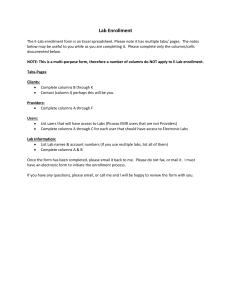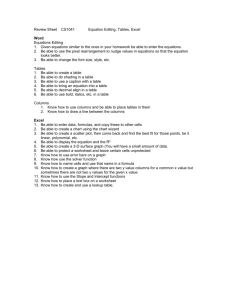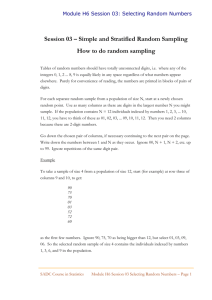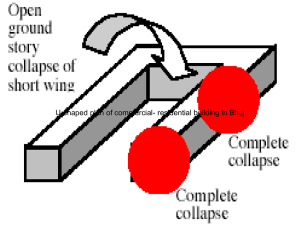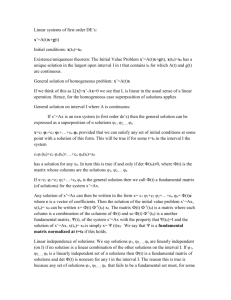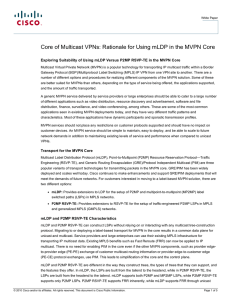tpj12917-sup-0007-Legends
advertisement
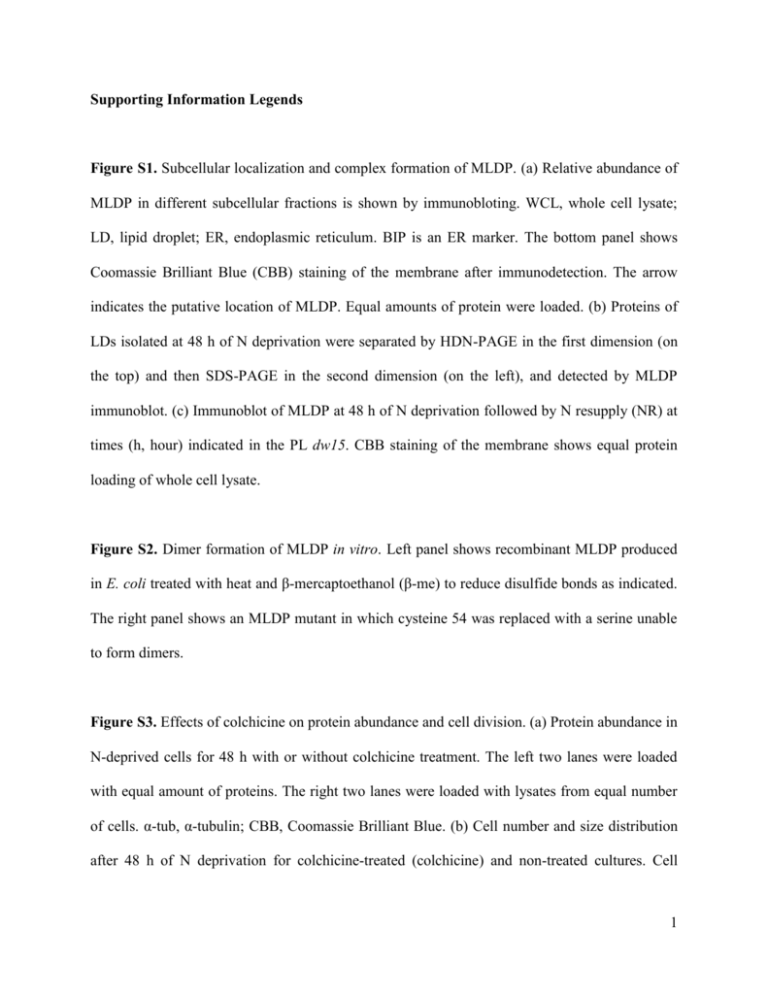
Supporting Information Legends Figure S1. Subcellular localization and complex formation of MLDP. (a) Relative abundance of MLDP in different subcellular fractions is shown by immunobloting. WCL, whole cell lysate; LD, lipid droplet; ER, endoplasmic reticulum. BIP is an ER marker. The bottom panel shows Coomassie Brilliant Blue (CBB) staining of the membrane after immunodetection. The arrow indicates the putative location of MLDP. Equal amounts of protein were loaded. (b) Proteins of LDs isolated at 48 h of N deprivation were separated by HDN-PAGE in the first dimension (on the top) and then SDS-PAGE in the second dimension (on the left), and detected by MLDP immunoblot. (c) Immunoblot of MLDP at 48 h of N deprivation followed by N resupply (NR) at times (h, hour) indicated in the PL dw15. CBB staining of the membrane shows equal protein loading of whole cell lysate. Figure S2. Dimer formation of MLDP in vitro. Left panel shows recombinant MLDP produced in E. coli treated with heat and β-mercaptoethanol (β-me) to reduce disulfide bonds as indicated. The right panel shows an MLDP mutant in which cysteine 54 was replaced with a serine unable to form dimers. Figure S3. Effects of colchicine on protein abundance and cell division. (a) Protein abundance in N-deprived cells for 48 h with or without colchicine treatment. The left two lanes were loaded with equal amount of proteins. The right two lanes were loaded with lysates from equal number of cells. α-tub, α-tubulin; CBB, Coomassie Brilliant Blue. (b) Cell number and size distribution after 48 h of N deprivation for colchicine-treated (colchicine) and non-treated cultures. Cell 1 concentrations of both cultures were approximately equal at the beginning of N deprivation. The total cell number (million cells/mL) is shown inside the parenthesis. Table S1. Lipid composition and fatty acid profile of polar lipids. aThe original DGTS and DGDG. bLipids running below DGTS and DGDG found in the lipid droplets of MLDP RNAi lines. TP, total polar lipids; -N, 48 h of N deprivation; NR, 9 h of N resupply; TC, total cell; LD, lipid droplet; MGDG, monogalactosyldiacylglycerol; DGTS, diacylglyceryl- trimethylhomoserine; PtdEt, phosphatidylethanolamine; PtdGro, phosphatidylglycerol; DGDG, digalactosyldiacylglycerol; SQDG, sulfoquinovosyldiacylglycerol; PtdIns, phosphatidylinositol. Abbreviations of fatty acids as in the legend to Figure 5. Data S1. Unfiltered list of lipid droplet proteins co-immunoprecipitated with MLDP. Columns A, G, M, S, Y, AE, AL and AQ are gene model ID, for the V5.3.1 genome. Columns B, H, N, T, Z, AF, AM and AR are the coverage (%) based on the peptide count. Columns C, I, O, U, AA, AG, AN and AS are Exclusive Unique Peptide Count (EUPC, number of different amino acid sequences that are associated only with this protein). Columns D, J, P, V, AB, AH, AO and AT are Exclusive Unique Spectrum Count (EUSC, number of unique spectra associated only with this protein). Columns E, K, Q, W, AC, AI, AP and AU are Exclusive Spectrum Count (ESC, number of spectra associated only with this protein). Columns F, L, R, X, AD, AJ, AQ and AV are Total Spectrum Count (TSC, total number of spectra associated with this protein including those shared with other proteins). 2 Data S2. Lipid droplet proteins co-immunoprecipitated with MLDP. Columns A and B are gene model ID and gene name, for the V5.3.1 genome. Column C is the molecular mass in kDa. Columns D through W listed the peptide or spectral counts identified through LC-MS/MS (Ctrl., negative control; R1, R2 and R3, the 1st, 2nd and 3rd biological replicates); Exclusive Unique Peptide Count: Number of different amino acid sequences that are associated only with this protein; Exclusive Unique Spectrum Count: Number of unique spectra associated only with this protein; Exclusive Spectrum Count: Number of spectra associated only with this protein; Total Spectrum Count: Total number of spectra associated with this protein including those shared with other proteins. Column X is the % coverage based on the peptide count. Column Y is checked if protein is also found in the N resupply condition. Column Z lists lipid droplet proteins identified by Moellering & Benning, gene ID for the V3.0 genome. Column AA lists lipid droplet proteins identified by Nguyen et al., gene ID for V4.0 genome. Columns AB through AI are the annotations from the databases of DefLine, PFAM, Panther, KOG and Gene Ontology. Columns AJ and AK are the gene ID and annotation of the best homologue in Arabidopsis. Columns AL and AM are the statistically analysis of the fold change (log2) in gene expression (N deprivation versus N-replete) and the probability score for each gene model (padj, adjusted p value) as published in Tsai et al. 2014. 3
